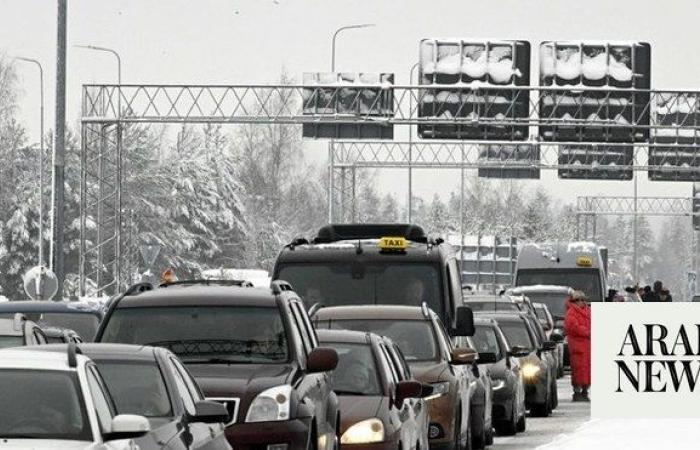Thank you for reading the news about Finnish law to stop migrants at Russia border makes progress in parliament and now with the details
Jeddah - Yasmine El Tohamy - NEW DELHI: India’s capital territory of Delhi was on the meteorological department’s highest weather alert on Tuesday, with the heat index surging to 50 degrees Celsius as an unusually long hot spell continued to grip parts of the country.
Prolonged extreme heat has been roiling swaths of South Asia, covering some of the world’s most densely populated regions. In India, it has hit especially the country’s north — home to more than 400 million people — including Delhi, with its 30 million inhabitants.
As temperatures soared above 45 degrees Celsius, the India Meteorological Department issued a red alert for Delhi and the states of Uttar Pradesh, Haryana and Punjab.
According to IMD, the heat index, or the feels-like temperature, was about 50 degrees Celsius due to humidity.
“If the temperature is 45 or 46 degrees Celsius, the feels-like temperature may be 50 or 51,” Dr. Mrutyunjay Mohapatra, the IMD’s director general of meteorology, told Arab News.
“The heatwave has been here in the northwest India in two spells. One spell was in the month of May and the second commenced around June 10.”
May is usually hot in the Indian subcontinent but this year the heatwave pattern is unusual, and northern parts of India were already on the IMD’s highest, “red alert” last month.
Mohapatra attributed the anomaly to the El Nino climate phenomenon, which every few years disrupts weather patterns. The El Nino effect was overlapping the warming due to climate change.
“In El Nino years, north India experiences more heatwave conditions so that is the reason,” Mohapatra said. “Climate change leads to the rising of temperature and when there is a rise in temperature, the probability of the occurrence of heatwaves increases. That doesn’t mean that every year you will have this type of heat ... (but) there is a rising trend in the frequency, duration and intensity of heatwaves.”
Additional factors making the heat insufferable in India are rapid urbanization, deforestation and water shortages.
Delhi relies on external sources for freshwater supply, as its own groundwater resources are low.
Last month, the Delhi government had to approach the Supreme Court for intervention to obtain more water from neighboring states.
“I think the government has been looking after and lots of work has been done in various departments at the national and state level. But stringent policies have to be there ... we need to have good mitigation strategies to address the issue,” said Bharti Jasrotia, technology transfer manager at Development Alternatives, a Delhi-based social enterprise and think tank involved in sustainable development.
“They should do mass-scale plantation and create more urban forest areas in and around Delhi so that Delhi gets good air and the temperature gets diluted. The government will have to address the issue of groundwater, too. Many areas of Delhi are facing water shortages.
“They should also look for a good supply of water. They should involve people in plantation drives and this will help in the coming five years.”
These were the details of the news Finnish law to stop migrants at Russia border makes progress in parliament for this day. We hope that we have succeeded by giving you the full details and information. To follow all our news, you can subscribe to the alerts system or to one of our different systems to provide you with all that is new.
It is also worth noting that the original news has been published and is available at Arab News and the editorial team at AlKhaleej Today has confirmed it and it has been modified, and it may have been completely transferred or quoted from it and you can read and follow this news from its main source.

